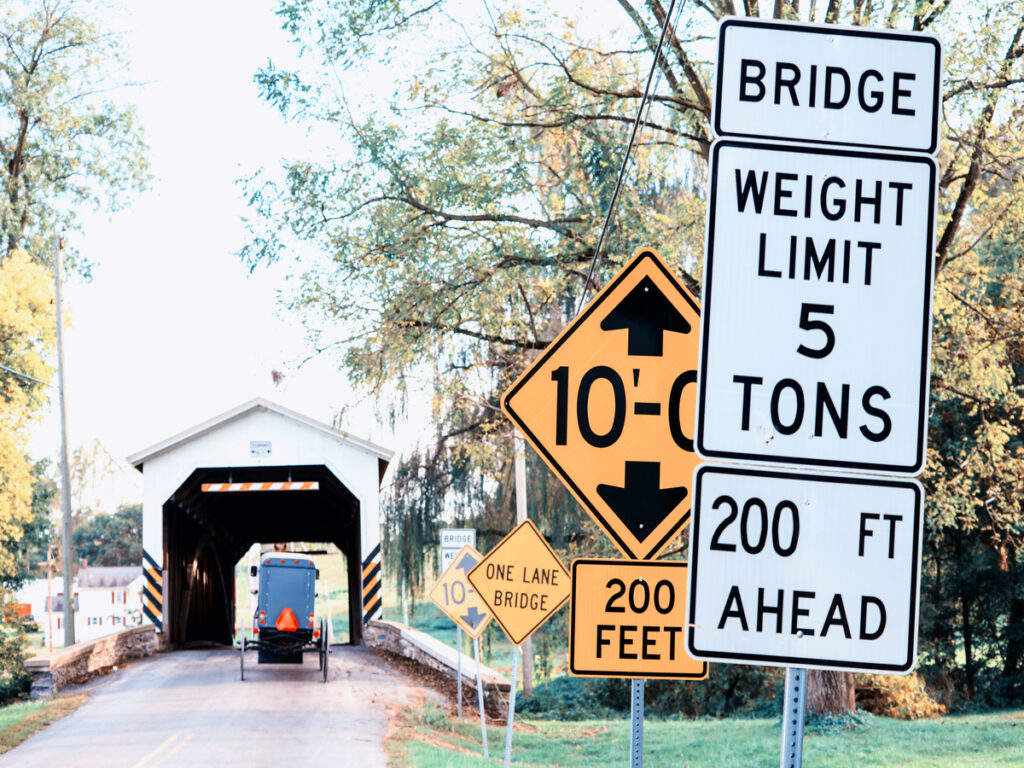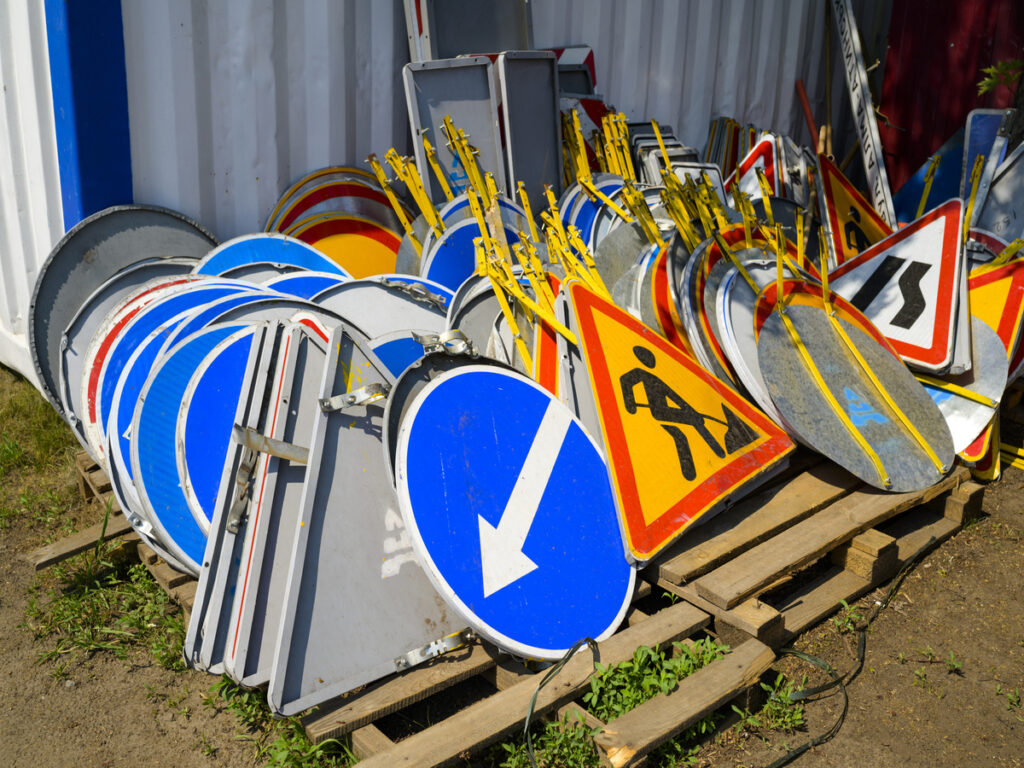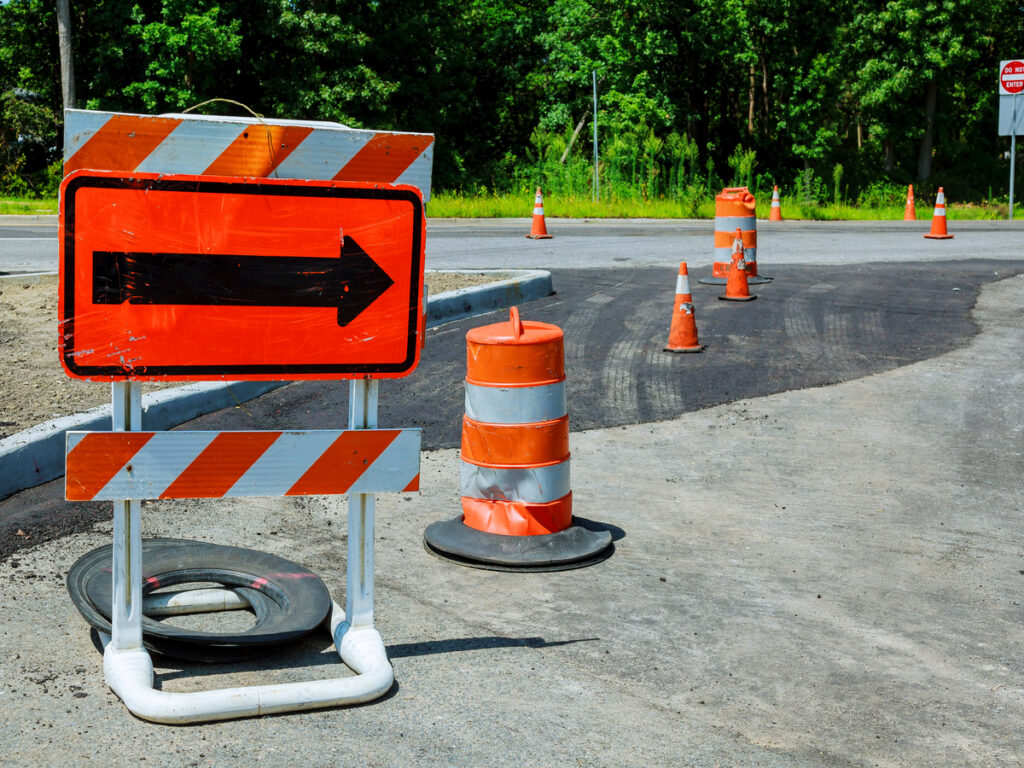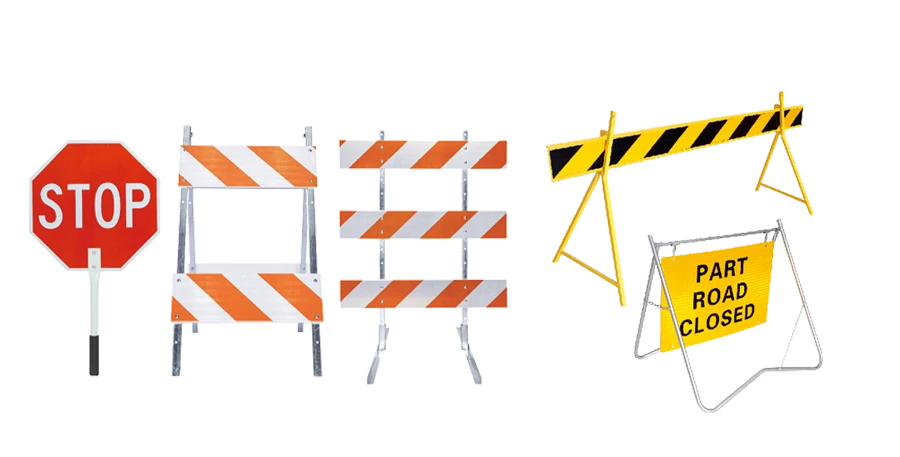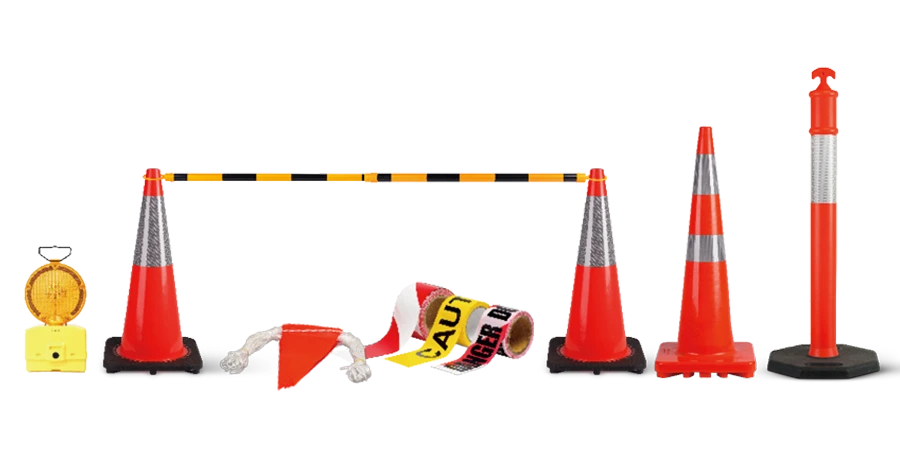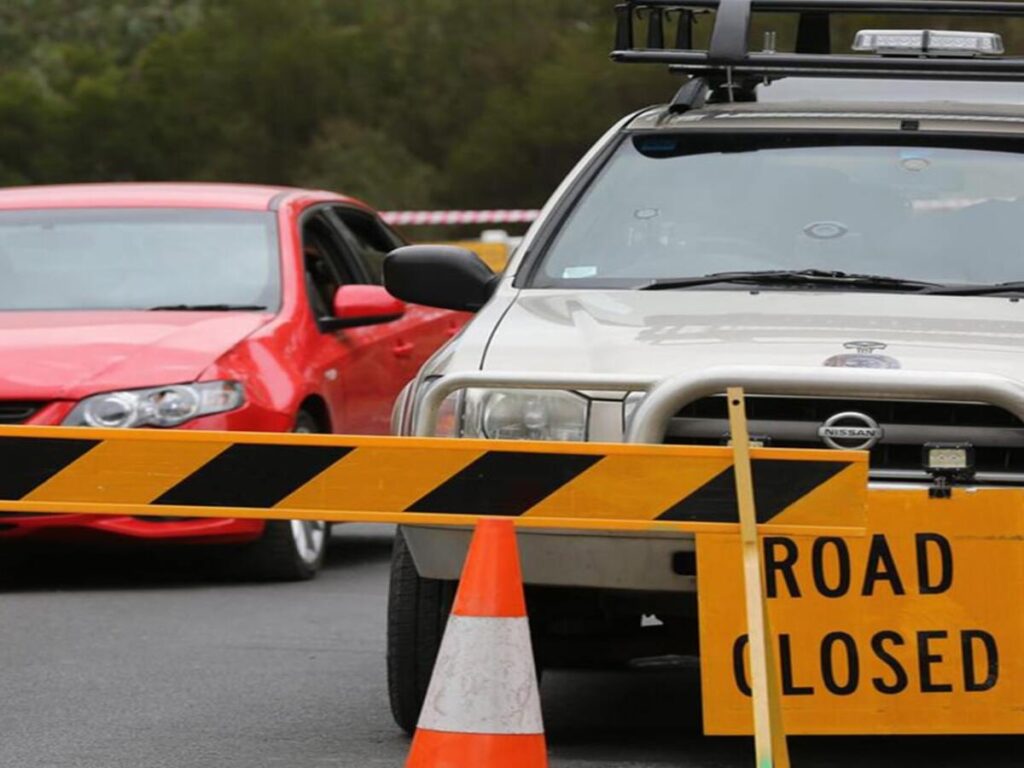
كل عام, يواجه العمال والسائقون مخاطر كبيرة في أعمال الطرق. في 2022, وقع حادث سيء عندما دخلت سيارة إلى منطقة العمل دون أي حماية. أصيب الناس وتأخر العمل. وقد أظهر هذا سبب الحاجة إلى الحواجز للحفاظ على سلامة الناس. تعمل الألواح العازلة مثل الدروع القوية. إنهم يبقون الناس بعيدًا عن السيارات على الطرق المزدحمة. يجب أن تحتوي مواقع البناء على ألواح حاجزة للسلامة. كما أنها تساعد في إظهار أين تنتهي منطقة العمل. تعد الحواجز أكثر أهمية مع حدوث المزيد من أعمال الطرق في المدن والبلدات. تحتاج السلامة إلى حواجز يسهل رؤيتها وقوية جدًا. تساعد هذه الحواجز كلا من السائقين والعمال على البقاء آمنين.
تقدم OPTRAFFIC مجموعة متنوعة من الجودة العالية لوحات الحاجز مصممة لتحقيق أقصى قدر من الرؤية والسلامة في مناطق العمل على الطرق. تم تصميم حواجزنا لتحمل الظروف القاسية وضمان حماية العمال والسائقين. استكشف مجموعتنا اليوم لتحسين السلامة والكفاءة في مواقع البناء الخاصة بك.
لوحات الحواجز والسلامة على الطرق
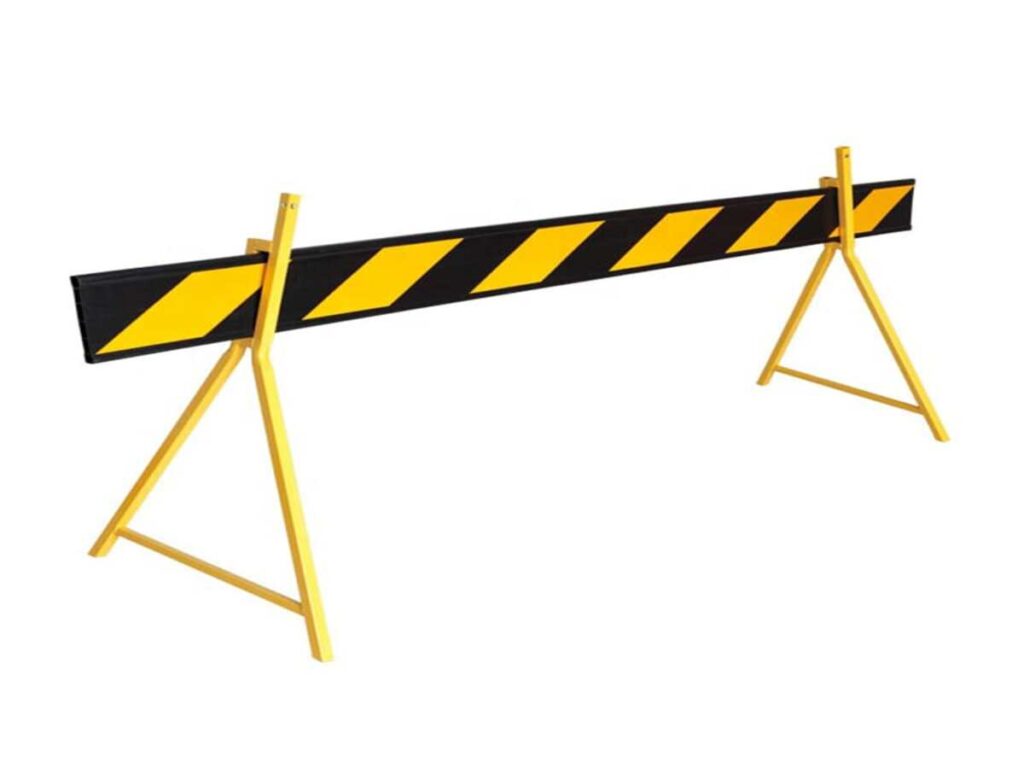
حماية العمال
تعتبر الألواح العازلة مهمة جدًا للحفاظ على سلامة العمال. تشكل حواجز المرور هذه جدارًا قويًا بين العمال والسيارات. يرى السائقون الحواجز ويعرفون عدم تجاوزها. وهذا يساعد على وقف الإصابات والحوادث المميتة. مواقع البناء لديها آلات كبيرة والكثير من العمال. تظهر الحواجز أين يمكن للناس أن يذهبوا وما لا يمكنهم الذهاب إليه. كما أنها تساعد في توجيه السيارات بعيدًا عن الخطر. يمكن للعمال القيام بعملهم دون القلق بشأن السيارات. الحواجز تبقي الناس بعيدا عن ممرات المرور المزدحمة. كما أنهم يمنعون السيارات من الذهاب إلى أماكن لا ينبغي لها ذلك. وهذا يجعل الجميع في منطقة العمل أكثر أمانًا.
إنشاء مناطق عمل آمنة
تساعد الحواجز في جعل مناطق العمل آمنة من خلال إظهار مكان العمل. تخبر حواجز الطرق السائقين والأشخاص الذين يسيرون بمكان منطقة العمل. توضح هذه الحواجز الأماكن الآمنة للمشي أو القيادة. تساعد الحواجز الأشخاص على المشي بأمان عبر الموقع أو حوله. تساعد حواجز الطرق أيضًا في التحكم في كيفية تحرك السيارات بالقرب من مكان العمل. يقومون بتوجيه حركة المرور حول منطقة العمل ووقف الارتباك. دراسة أجراها هان وبريدن ل وزارة النقل في ولاية نيويورك وجدت بعض التصاميم الحاجز, مثل الرصيف الخشبي مقاس 16 بوصة مع سكة فولاذية ذات شعاع W, يمكنها إبعاد السيارات بأمان بسرعات متوسطة. تعمل الحواجز الخرسانية المحمولة أيضًا بشكل جيد في حركة المرور السريعة. وضع الحواجز في الطريق الصحيح, مثل شد المفاصل والحشو, يجعلها أقوى ويوقف الضرر. تظهر هذه النتائج أن الألواح العازلة الجيدة والإعداد المناسب يجعل مناطق العمل أكثر أمانًا للجميع.
نصيحة: تأكد دائمًا من وضع الحواجز بالطريقة الصحيحة للحفاظ على سلامة العمال ومستخدمي الطريق قدر الإمكان.
تعزيز الرؤية
تعد القدرة على رؤية الحواجز أمرًا مهمًا جدًا للسلامة في مواقع العمل. غالبًا ما تستخدم ألواح الحواجز ألوانًا زاهية مثل الخطوط الصفراء والسوداء. العديد من الحواجز لها أسطح لامعة تعكس الضوء. تلمع هذه الأسطح عندما تصطدم بها أضواء السيارة ليلاً أو في الضباب. تشير الدراسات إلى أن المواد العاكسة للضوء تساعد الأشخاص على رؤية الحواجز بشكل أفضل في الظلام. وهذا يساعد السائقين على اكتشاف العوائق مبكرًا وتجنب الاصطدامات. مواد جديدة, مثل المواد البلاستيكية المقاومة للأشعة فوق البنفسجية والطلاءات ذاتية التنظيف, مساعدة الأسطح اللامعة على الاستمرار لفترة أطول والعمل بشكل أفضل. الرؤية الجيدة تحافظ على سلامة العمال والأشخاص, حتى في الطقس السيئ أو في الليل. الحواجز التي يسهل رؤيتها تمنع السيارات من الدخول إلى الأماكن الخطرة. تعتبر الحواجز ذات الأسطح اللامعة مهمة جدًا للحفاظ على مناطق العمل آمنة طوال الوقت.
منع الحوادث باستخدام حواجز الطرق
تقليل الاصطدامات
تعتبر حواجز الطرق مهمة جدًا لوقف الحوادث في مواقع البناء. تشكل هذه الحواجز خطاً واضحاً وقوياً بين مناطق العمل والسيارات. يرى السائقون الحواجز ويعرفون أين يجب عليهم القيادة. وهذا يساعد على منع السيارات من الذهاب إلى الأماكن الخطرة. تساعد حواجز السلامة على الطرق السائقين على البقاء على الطريق الصحيح. عندما تكون الحواجز في المكان الصحيح, يمنعون السيارات من دخول مناطق العمل. كما تعمل حواجز المرور على حماية العمال من الحوادث المفاجئة. تستخدم العديد من الحواجز الألوان الزاهية والشرائط اللامعة, لذلك يسهل رؤيتها ليلاً أو نهارًا. يمكن أن تتحمل حواجز الأمان بعض القوة إذا اصطدمت بها سيارة. وهذا يمكن أن ينقذ الأرواح ويمنع الناس من التعرض للأذى. تعمل حواجز الطرق مثل الدروع وتحافظ على سلامة العمال والسائقين.
ملحوظة: يجب فحص حواجز الطرق بشكل متكرر للتأكد من بقائها قوية وسهلة الرؤية من أجل سلامة الجميع.
إدارة تدفق حركة المرور
تساعد حواجز المرور في التحكم في كيفية تحرك السيارات حول مواقع البناء. هذه الحواجز توجه السيارات, الشاحنات, والحافلات على طول الطرق الآمنة. تستخدم خطة المرور الجيدة حواجز الطرق للحفاظ على حركة المرور بشكل جيد. توضح الحواجز للسائقين متى يجب عليهم إبطاء السرعة أو تغيير الممرات. تساعد حواجز السلامة على الطرق على وقف الارتباك والحركات المفاجئة للسيارات. عندما تكون الحواجز في المكان المناسب, فهي تساعد في وقف الاختناقات المرورية والتأخير. تساعد حواجز الطرق أيضًا مركبات الطوارئ في العثور على طرق آمنة عبر الطرق المزدحمة. تعمل حواجز الأمان على تنظيم حركة المرور وتقليل احتمالية وقوع حوادث. تعمل حواجز الطرق بإشارات وأقماع لإعطاء توجيهات واضحة للجميع. تستخدم خطة المرور الجيدة دائمًا الحواجز المناسبة لكل وظيفة.
- حواجز المرور تساعد:
- أبقِ الممرات متباعدة
- عرض المنعطفات
- حماية الأماكن التي يمكن للناس المشي فيها
- التحكم في مكان دخول وخروج السيارات
مناطق عالية الخطورة
بعض أجزاء الطريق تحتاج إلى مزيد من الرعاية. ممرات ضيقة, البقع العمياء, والزوايا الحادة هي الأماكن التي يمكن أن تحدث فيها حوادث أكثر. توفر حواجز الطرق أمانًا إضافيًا في هذه المواقع. تقف الحواجز على حافة الممرات الضيقة لمنع السيارات من الانجراف. في البقع العمياء, تساعد حواجز الطرق السائقين على معرفة إلى أين يتجهون بعد ذلك. الزوايا الحادة يمكن أن تكون مربكة, لكن الحواجز توجه السيارات بأمان حول المنعطفات. حواجز السلامة على الطرق في هذه الأماكن تقلل من فرص وقوع الحوادث. تساعد حواجز المرور أيضًا على حماية العمال الذين يعملون بالقرب من السيارات المتحركة. تحافظ حواجز الأمان على سلامة العمال والسائقين في الأماكن الصعبة. يمكن نقل حواجز الطريق أو تغييرها مع تغير منطقة العمل. وهذا يساعد في الحفاظ على سلامة كل جزء من الطريق أثناء جميع أعمال البناء.
نصيحة: استخدم دائمًا المزيد من حواجز الطرق في الأماكن الخطرة لجعل الجميع أكثر أمانًا.
| منطقة عالية المخاطر | وظيفة الحاجز | ميزة السلامة |
|---|---|---|
| الممرات الضيقة | توقف السيارات الانجراف | حوادث جانبية أقل |
| البقع العمياء | يظهر الحواف, يرشد السائقين | أفضل رؤية |
| زوايا حادة | يرشد حركة المرور, يبطئ السيارات | حوادث أقل |
حواجز الطرق, حواجز المرور, وحواجز السلامة تعمل جميعها معًا للحفاظ على سلامة الطرق. أنها تساعد على وقف الأعطال, السيطرة على حركة المرور, وحماية الجميع بالقرب من مواقع البناء.
أنواع حواجز السلامة على الطرق
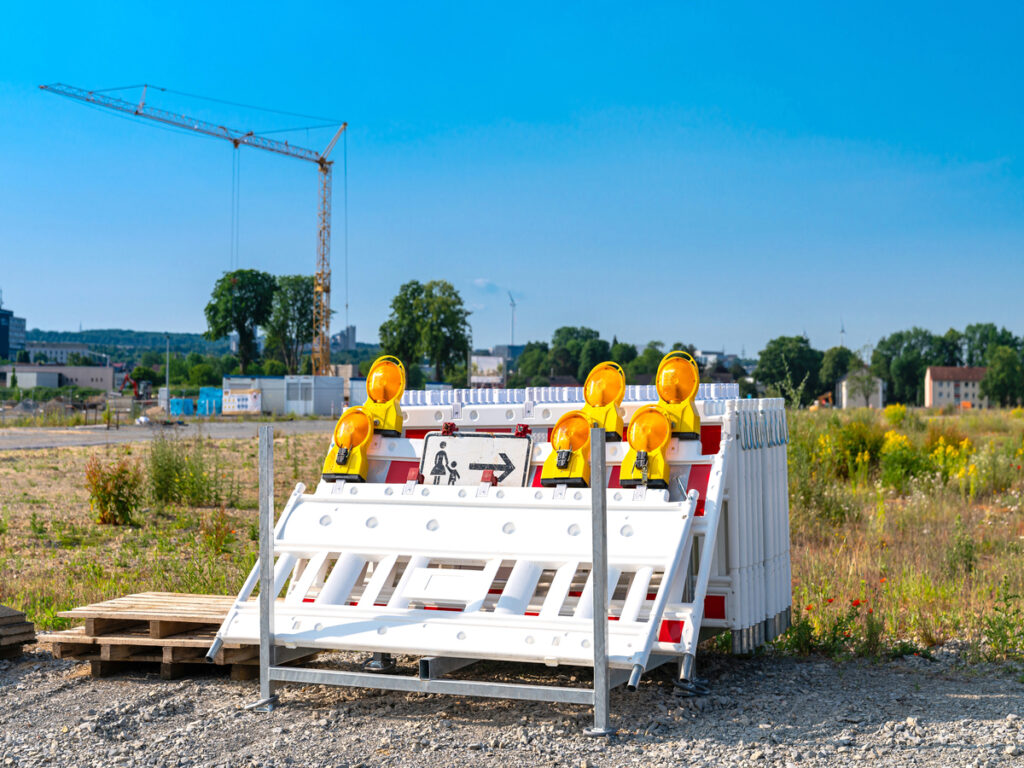
العوائق المؤقتة والدائمة
تأتي الحواجز في أنواع عديدة لوظائف مختلفة. بعض الحواجز تستخدم فقط لفترة قصيرة. والبعض الآخر يبقى في مكانه لسنوات عديدة. تعتبر الحواجز المؤقتة مفيدة للمشاريع التي لا تدوم طويلاً. They are also helpful when work areas move a lot. Permanent barriers stay in one spot for a long time. They protect people on busy roads or in dangerous places.
فيما يلي جدول يوضح الاختلافات الرئيسية:
| وجه | Temporary Road Safety Barriers | Permanent Road Safety Barriers |
|---|---|---|
| Intended Duration | الاستخدام على المدى القصير | الاستخدام طويل الأمد |
| تصميم | محمول, adaptable, خفيف الوزن | مُثَبَّت, قوي, متينة |
| متانة | أقل دائمة, may not withstand extreme weather or prolonged use | متينة للغاية, withstands environmental stress and heavy use |
| تثبيت | Quick to deploy, less complex | Complex installation, fixed in place |
| مجالات التطبيق | مناطق العمل, مواقع البناء, temporary lane closures, الالتفاف, الأحداث الخاصة | التقاطعات, الطرق السريعة, المناطق المدرسية, الجسور, المناطق السكنية |
| فعالية | Effective for temporary safety needs but less reliable under extreme conditions | موثوق, صيانة منخفضة, consistently manages traffic and protects drivers and pedestrians |
| يكلف | Cost-effective upfront | ارتفاع تكلفة مقدمة |
Temporary barriers, like water-filled plastic ones, من السهل التحرك. Permanent barriers, such as concrete or steel guardrails, give strong protection for many years.
Materials and Designs
Barriers are made from different materials and shapes. Some use steel, بينما يستخدم البعض الآخر الخرسانة, البلاستيك, أو الكابلات. كل مادة لها نقاطها الجيدة. تمنع حواجز الحماية الفولاذية السيارات من مغادرة الطريق. الحواجز جيرسي, مصنوعة من الخرسانة أو البلاستيك, تقسيم الممرات والمساعدة في التحكم في حركة المرور. تستخدم حواجز الكابلات كابلات فولاذية لاستيعاب قوة الاصطدام. حواجز المشاة, مثل الشمعات والأسوار, الحفاظ على سلامة الناس في الأماكن المزدحمة. تستخدم الحواجز المؤقتة لمنطقة العمل مواد خفيفة بحيث يمكن نقلها بسهولة.
| نوع الحاجز | مادة | الوصف والتصنيف |
|---|---|---|
| الدرابزين | فُولاَذ | مصمم لمنع المركبات من مغادرة الطريق والاصطدام بالمخاطر مثل الأشجار أو السدود. |
| الحواجز جيرسي | الخرسانة أو البلاستيك | حواجز معيارية تستخدم لفصل الممرات والتحكم في تدفق حركة المرور; يمكن ملؤها بالماء أو الرمل من أجل الثبات. |
| حواجز الكابلات | الكابلات الفولاذية | حواجز مرنة تمتص طاقة التأثير, تستخدم عندما تكون حواجز الحماية الصلبة غير مناسبة. |
| حواجز المشاة | الشمعات, الأسوار | فصل ممرات المشاة عن المركبات لتعزيز سلامة المشاة في المناطق الحضرية أو المزدحمة. |
| منطقة العمل الحواجز المؤقتة | مواد خفيفة الوزن | مؤقت, حواجز مرئية للغاية مصممة لسهولة الحركة ومنع الحوادث في مناطق البناء. |
تساعد اختبارات التصادم في التحقق مما إذا كانت الحواجز تعمل بشكل جيد. تظهر بعض الدراسات أن الأعطال الحقيقية يمكن أن تكون مختلفة عن نتائج الاختبار. ويقول الخبراء إن هناك حاجة إلى طرق اختبار جديدة للتأكد من أن الحواجز آمنة في حركة المرور الحقيقية.
اختيار الحاجز الصحيح
يتطلب اختيار الحاجز المناسب لموقع ما تفكيرًا متأنيًا. تساعدك هذه الخطوات على اختيار الأفضل:
- قرر لماذا تحتاج الحاجز, مثل الحفاظ على سلامة العمال.
- فكر في المركبات التي قد تصطدم بالحاجز, مثل السيارات أو الشاحنات.
- اختر نوع الحاجز, مثل جامدة, شبه جامدة, أو مرنة.
- فكر في الطقس, مثل المطر أو الحرارة, التي يمكن أن تؤثر على الحاجز.
- قارن بين تكلفة وضعها والعناية بها.
- تأكد من أن الحاجز يتبع جميع قواعد السلامة.
- فكر في المساحة وكيف يبدو الحاجز, خاصة في المدن.
- اطلب المساعدة من الخبراء لاختيار أفضل حاجز للموقع.
نصيحة: قم دائمًا باختيار الحواجز التي تتناسب مع مخاطر الموقع واحتياجاته للحصول على أفضل أمان.
الحواجز مهمة جدًا للسلامة على الطرق. أنها تساعد في السيطرة على حركة المرور, حماية الناس, والحفاظ على مناطق العمل آمنة. تساعد الحواجز الصحيحة في وقف الحوادث وإنقاذ الأرواح.
استخدام الحواجز بشكل فعال
التنسيب والتثبيت
إن وضع حواجز المرور في المكان المناسب مهم جدًا للسلامة. يجب على العمال وضع الحواجز قبل بدء أي أعمال بناء. توجد حواجز على حافة منطقة العمل لإبعاد العمال عن حركة المرور. يجب أن تتبع الحواجز شكل الطريق وتغلق جميع الطرق. هذا يمنع السيارات من الدخول إلى الأماكن الخطرة. تستخدم الفرق الألوان الزاهية والأشرطة اللامعة حتى يسهل رؤية الحواجز. يساعد الموضع الجيد السائقين على معرفة مكان القيادة ويحافظ على سلامة الأشخاص. إن التخطيط الجيد يمنع الارتباك ويساعد خطوات السلامة الأخرى على العمل بشكل جيد.
نصيحة: قم دائمًا بإلقاء نظرة على خريطة الموقع قبل وضع الحواجز. وهذا يضمن أن الحواجز تغطي كل شيء وأن المسارات واضحة للسيارات والأشخاص.
الصيانة والتفتيش
يجب أن تكون الحواجز في حالة جيدة للحفاظ على سلامة الناس. يجب على الفرق التحقق من الحواجز كل يوم. يبحثون عن الشقوق, البتات المفقودة, أو الألوان الباهتة. لا يمكن للحواجز المكسورة أن تحافظ على سلامة الناس. يجب على العمال إصلاح أو تبديل الحواجز المكسورة على الفور. من السهل اكتشاف الحواجز النظيفة, حتى في الليل أو في الطقس السيئ. غالبًا ما يساعد فحص الحواجز في الحفاظ على الطرق آمنة للجميع. تعني الصيانة أيضًا التأكد من وضع الحواجز في المكان الصحيح بعد الرياح القوية أو كثرة حركة المرور.
| قائمة التحقق من التفتيش | الإجراء مطلوب |
|---|---|
| الشقوق أو الفواصل | استبدل الحاجز |
| ألوان باهتة | إعادة رسم أو استبدال |
| خارج الموقف | العودة إلى مكانه |
| قذرة أو مسدودة | حاجز نظيف |
التكيف مع الاحتياجات المتغيرة
تتغير مواقع البناء مع استمرار العمل. ويجب أن تتغير الحواجز أيضًا. الحواجز المعيارية, مثل حواجز جيرسي البلاستيكية, مرنة للغاية. يمكن للعمال التحرك والانضمام إلى هذه الحواجز بسرعة. يمكنهم ملئها بالماء أو الرمل لجعلها أثقل. يتيح ذلك للفرق تغيير التخطيط مع تغير العمل. تساعد التغييرات السريعة في الحفاظ على أمان الموقع في حالة حدوث حالة طارئة أو تغيرات في حركة المرور. تعتبر هذه الحواجز أيضًا جيدة للحشود وتحديد الأماكن التي يمكن للأشخاص المشي فيها. ألوانها الزاهية وسهولة حركتها تجعلها اختيارًا جيدًا للعديد من الوظائف.
- فوائد الحواجز المعيارية:
- من السهل وضعها والتحرك
- يمكن تغيير الوزن للقوة
- ألوان زاهية للسلامة
- توفير المال ويمكن استخدامه مرة أخرى
- جيد للعديد من احتياجات السلامة
ملحوظة: تساعد الحواجز المرنة الفرق على التصرف بسرعة عند ظهور مخاطر جديدة والحفاظ على الطرق آمنة في كل خطوة من خطوات البناء.
تعتبر الألواح العازلة وحواجز السلامة على الطرق مهمة جدًا للحفاظ على سلامة العمال والسائقين. هناك أنواع مختلفة, وكل واحد يساعد بطريقته الخاصة:
- الحواجز المملوءة بالمياه تأخذ في القوة من حوادث وإبطاء السيارات.
- تساعد حواجز الطبول السائقين على التحرك بأمان حول مناطق العمل.
- تمنع الحواجز المعدنية الأشخاص الذين لا ينبغي لهم الدخول وتحافظ على سلامة العمال.
إن فحص الحواجز بشكل متكرر ووضعها في المكان المناسب يجعلها تعمل بشكل جيد. إن الالتزام بقواعد السلامة والعادات الجيدة يساعد الجميع على العودة إلى منازلهم بأمان كل يوم.
التعليمات
ما هي لوحة الحاجز المستخدمة في مناطق البناء?
تحدد لوحة الحاجز حافة منطقة العمل. يحافظ على سلامة العمال من حركة المرور. يرى السائقون اللوحة ويعرفون إلى أين يجب ألا يذهبوا. تساعد الألواح العازلة على منع وقوع الحوادث وتوجيه المركبات بأمان.
كم مرة يجب على الفرق فحص الألواح العازلة؟?
يجب على الفرق فحص ألواح الحاجز كل يوم. يبحثون عن الضرر, الأوساخ, أو الألوان الباهتة. تساعد الفحوصات السريعة في الحفاظ على عمل اللوحات بشكل جيد. الألواح النظيفة والقوية تحمي الجميع في الموقع.
هل يمكن استخدام الألواح العازلة في الليل أو في الأحوال الجوية السيئة?
نعم, تعمل الألواح العازلة بشكل جيد في الليل أو في الأحوال الجوية السيئة. تحتوي العديد من اللوحات على شرائط عاكسة. تتألق هذه الشرائط عندما تصطدم بها المصابيح الأمامية. يمكن للسائقين رؤية اللوحات بوضوح, حتى في الضباب أو المطر.
هل الألواح العازلة قابلة لإعادة الاستخدام لمشاريع مختلفة؟?
معظم الألواح العازلة قابلة لإعادة الاستخدام. يمكن للفرق نقلهم إلى مواقع جديدة. التصميمات المعيارية تجعل من السهل إعدادها مرة أخرى. وهذا يوفر المال ويساعد في الحفاظ على أمان العديد من مناطق العمل.
نصيحة: قم بتخزين الألواح العازلة في مكان جاف لإبقائها في حالة جيدة لاستخدامها في المستقبل.

